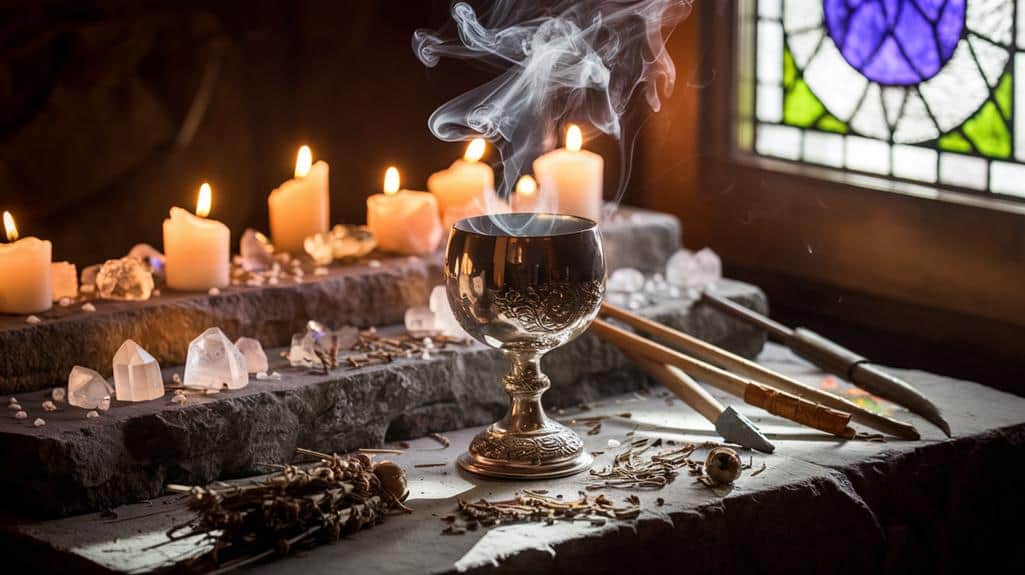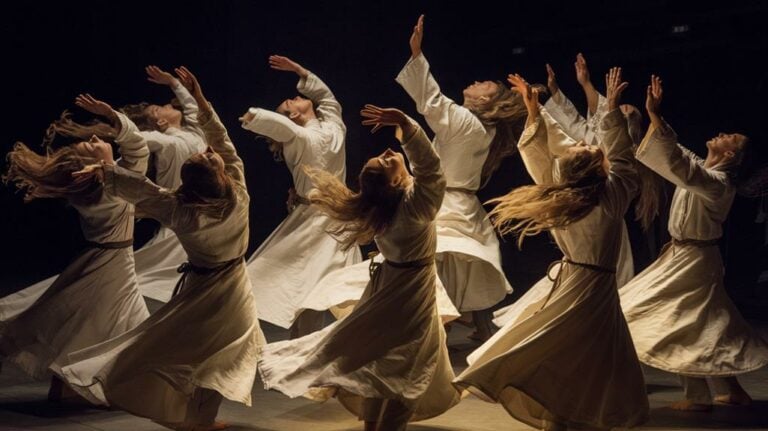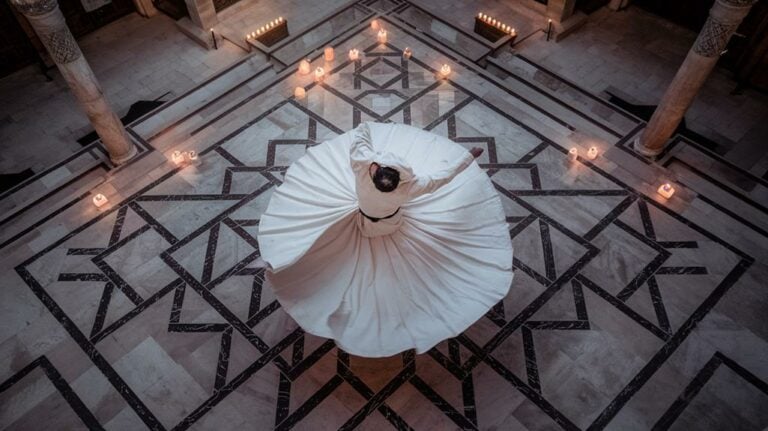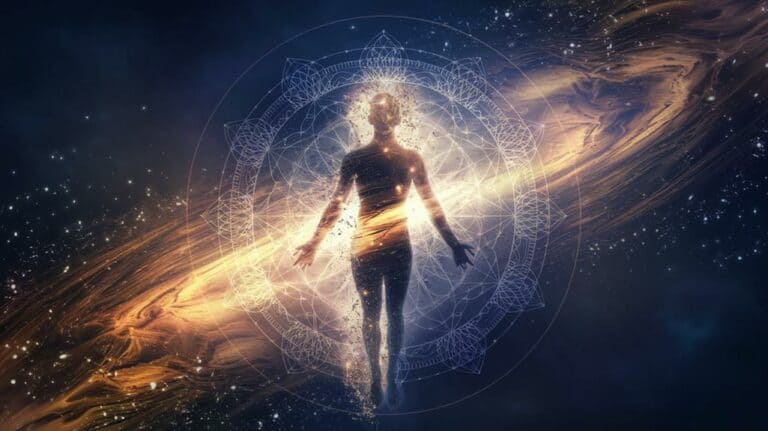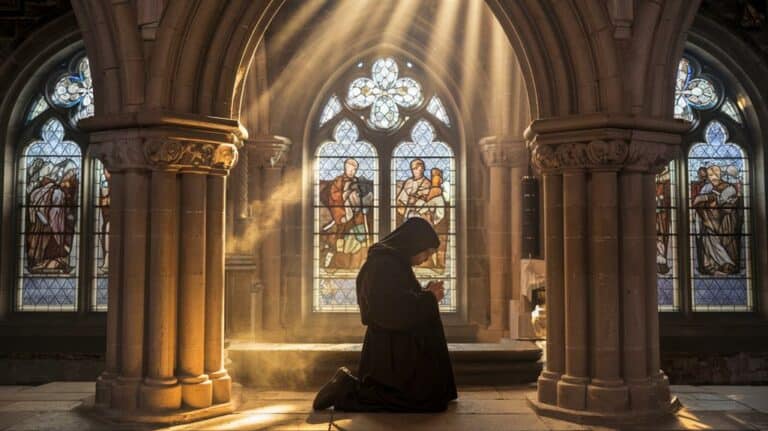The Role of Ritual in Mystical Practices
You’ll find that ritual transcends mere routine when you examine its role in mystical practices. As you explore the ancient traditions that span cultures and centuries, you’ll discover how these sacred acts transform ordinary moments into gateways of spiritual potential. Whether it’s the burning of sage, the rhythmic chanting of mantras, or the careful arrangement of sacred objects, each deliberate action serves as a bridge between the mundane and divine dimensions. But to truly understand how rituals reveal deeper states of consciousness and facilitate mystical encounters, you’ll need to reflect on their fundamental elements and enduring power across time.
Origins of Sacred Ritual
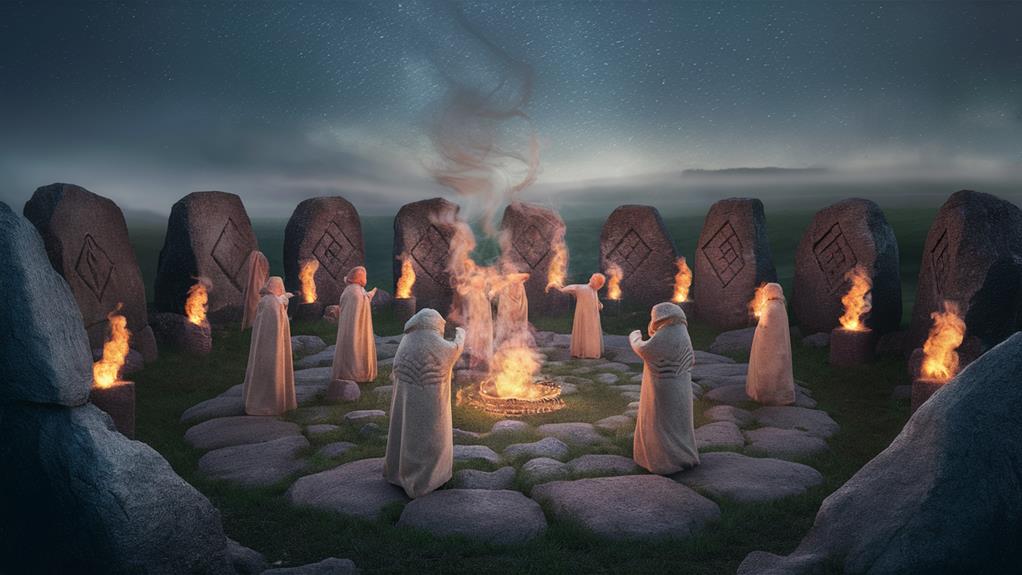
Sacred ritual emerged from humanity’s earliest attempts to understand and influence natural phenomena. You’ll find that your ancestors developed these practices as they witnessed the raw power of lightning strikes, the cyclic dance of celestial bodies, and nature’s endless rhythms of birth and death.
Through ritual, they sought to bridge the gap between their earthly existence and the divine mysteries that surrounded them. When you explore ancient sacred sites, you’re connecting to this primordial quest for meaning. You’re touching the same stones your forebears touched as they created ceremonies to honor the forces they couldn’t fully comprehend.
These earliest rituals weren’t merely symbolic acts – they were essential tools for survival, helping communities process grief, celebrate life’s changes, and maintain social bonds. You’ll discover that ritual’s origins lie in the recognition of patterns – the sun’s daily journey, the moon’s phases, and the seasonal shifts that determine hunting and gathering cycles.
Your ancestors wove these observations into ceremonial frameworks, creating sacred spaces where the mundane could transform into the mystical, where you could step beyond ordinary reality into domains of deeper meaning.
Symbols and Sacred Objects
Throughout history, ritual objects and symbols have served as bridges between the physical and spiritual spheres. You’ll find these sacred tools across cultures – from ornate chalices and ceremonial daggers to simple stones and feathers – each carrying layers of meaning that transcend their material form.
When you hold these objects, you’re connecting to an ancient lineage of seekers who’ve used them to pierce the veil between worlds.
In your spiritual practice, you’ll discover that symbols work as keys to access deeper states of consciousness. A circle isn’t just a shape; it’s infinity made visible. The flame of a ritual candle becomes your own inner light seeking expression.
You’re not merely observing these symbols – you’re engaging with them as dynamic portals to understanding. Sacred objects amplify your intentions, whether they’re crystals resonating with Earth’s frequencies or incense whose smoke carries your prayers skyward.
They’re tools of transformation that you’ll learn to wield with increasing sensitivity, helping you navigate between ordinary reality and mystical dimensions with greater confidence and clarity.
Ritual Elements Across World Cultures
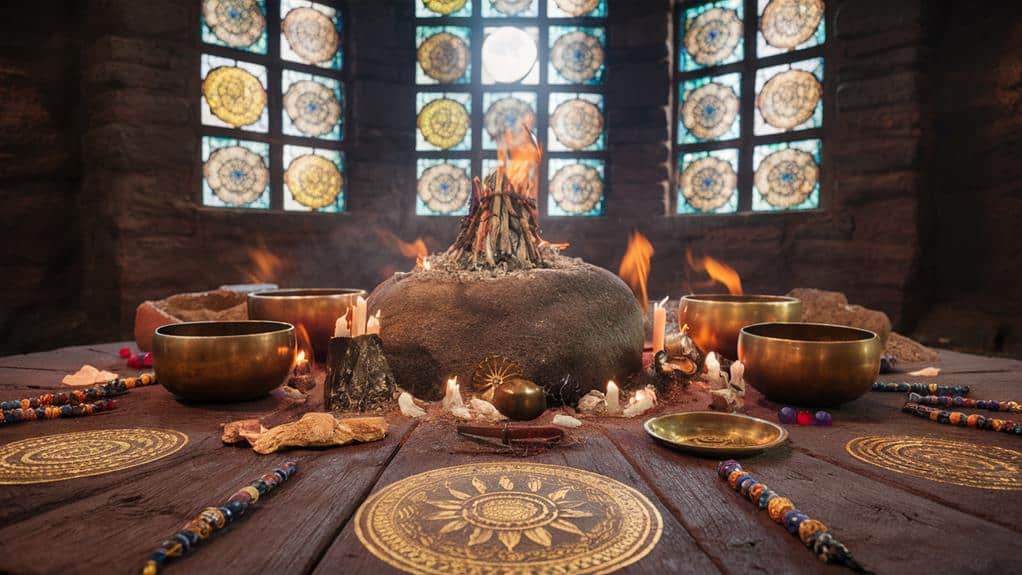
Diverse cultures worldwide share fundamental ritual elements that transcend geographical boundaries and belief systems. You’ll find that sacred movements, rhythmic chanting, and purification practices emerge consistently across traditions, whether you’re studying Native American smoke ceremonies or Hindu puja rituals.
These common threads weave through humanity’s spiritual fabric, connecting you to countless generations who’ve sought deeper meaning through ritualistic expression.
As you explore these parallel practices, you’ll notice how the burning of incense in Japanese Buddhist temples mirrors the use of sacred smoke in Mediterranean Orthodox churches, while the ritualistic sharing of blessed food appears in traditions from Sikh langars to Christian communion.
You’re part of this timeless tapestry when you engage in any form of spiritual practice, connecting to both ancient wisdom and contemporary seekance.
The circular movement of Sufi whirling dervishes echoes the spiral dances of Celtic traditions, while the use of sacred sound – from Tibetan singing bowls to Gregorian chants – demonstrates how cultures have discovered similar pathways to transcendence.
These shared elements reveal your place in humanity’s eternal quest for connection with the divine.
Power of Repetitive Practice
Repetition stands at the heart of ritual’s transformative power, creating neural pathways that deepen spiritual experience and awareness. When you consistently engage in a sacred practice, you’re not merely going through the motions – you’re forging connections between your conscious mind and deeper dimensions of understanding.
Your dedication to repetitive ritual acts as a key that opens doorways to heightened states of consciousness.
You’ll find that each time you perform a ritual sequence, whether it’s meditation, prayer, or ceremonial movement, you’re building upon previous experiences. These layers of practice accumulate like sediment, forming a solid foundation for mystical insight.
The power lies not in perfection but in persistence, as you’ll discover that even simple gestures gain profound meaning through disciplined repetition. Your nervous system begins to recognize these patterns as gateways to altered states, responding more readily with each iteration.
Through this dedicated practice, you’re fundamentally programming your consciousness to enter sacred space with increasing ease, allowing ritual to become a reliable vessel for transformation and spiritual awakening.
Sacred Space and Time
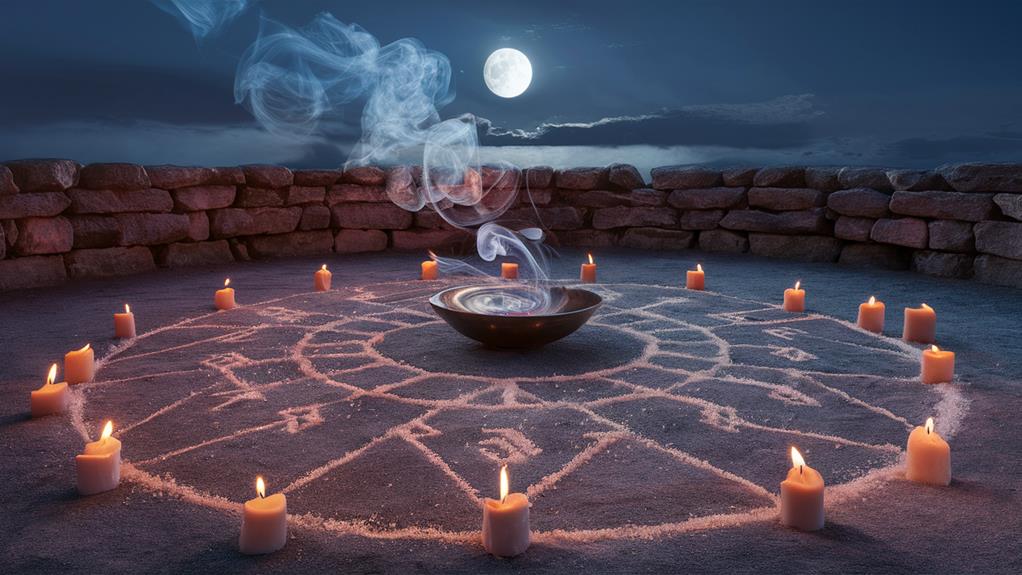
Sacred boundaries mark the divide between ordinary existence and mystical territories, requiring careful creation and maintenance of both physical and temporal spaces for ritual work.
You’ll find that establishing these sacred parameters isn’t fundamentally about physical demarcation – it’s about crafting a threshold where your consciousness can shift from mundane awareness to heightened spiritual receptivity.
When you’re setting sacred space, you’re weaving an energetic container that holds and amplifies your ritual intentions.
You’ll notice how time itself seems to bend within these boundaries, creating what scholars call “sacred time” – moments that exist outside the linear flow of everyday experience.
Through the deliberate arrangement of ritual objects, the burning of specific incense, or the drawing of protective circles, you’re fundamentally building a bridge between worlds.
In this sacred container, you’ll discover that the veils between seen and unseen territories grow thin.
Your rituals become more potent when performed within these carefully constructed boundaries, where every gesture carries deeper significance and your spiritual work finds its fullest expression.
Modern Applications of Ancient Rituals
While ancient mystical practices might seem incompatible with contemporary life, today’s practitioners have found innovative ways to adapt traditional rituals to modern settings. You’ll find sacred ceremonies now taking place in urban apartments, with LED candles replacing traditional flames and digital devices tracking lunar cycles that our ancestors once observed in the open sky. The essence of these practices remains intact, even as their forms evolve to meet your present-day needs.
You can integrate these time-honored traditions into your daily routine through mindful adaptations. Whether you’re creating an altar in your home office or performing cleansing rituals during your morning shower, you’re connecting to ancestral wisdom while honoring modern constraints. The power lies not in rigid replication but in capturing the spiritual intention behind each practice.
Consider how you might transform your morning coffee ritual into a meditation, or how your evening commute could become a journey of contemplation. These adaptations aren’t compromises but rather evolutionary steps in humanity’s ongoing spiritual journey, allowing you to maintain a connection with ancient wisdom while fully participating in contemporary life.



